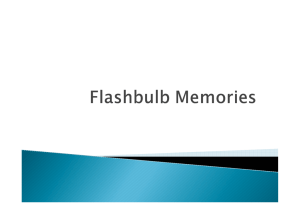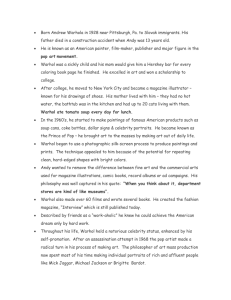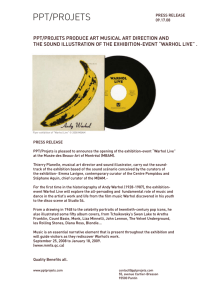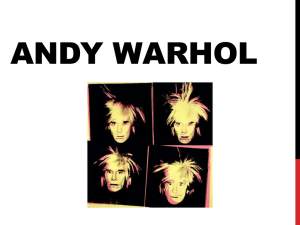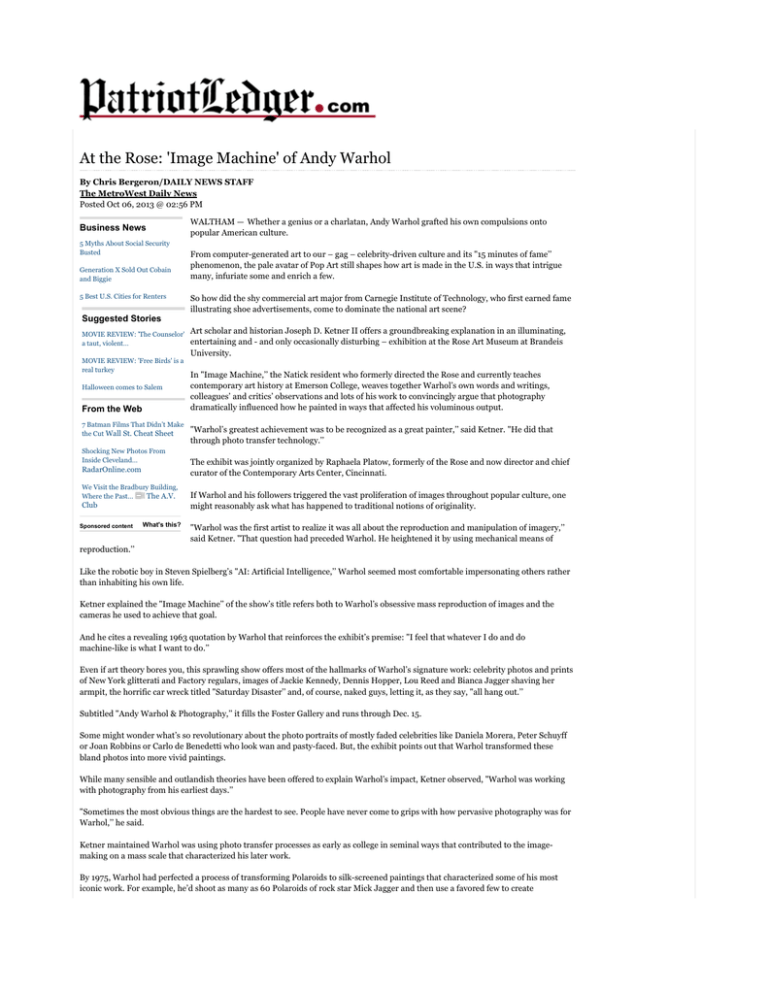
At the Rose: 'Image Machine' of Andy Warhol
By Chris Bergeron/DAILY NEWS STAFF
The MetroWest Daily News
Posted Oct 06, 2013 @ 02:56 PM
Business News
5 Myths About Social Security
Busted
Generation X Sold Out Cobain
and Biggie
5 Best U.S. Cities for Renters
Suggested Stories
MOVIE REVIEW: 'The Counselor'
a taut, violent…
MOVIE REVIEW: 'Free Birds' is a
real turkey
Halloween comes to Salem
From the Web
7 Batman Films That Didn’t Make
the Cut Wall St. Cheat Sheet
Shocking New Photos From
Inside Cleveland…
RadarOnline.com
We Visit the Bradbury Building,
Where the Past…
The A.V.
Club
Sponsored content
What's this?
WALTHAM — Whether a genius or a charlatan, Andy Warhol grafted his own compulsions onto
popular American culture.
From computer-generated art to our – gag – celebrity-driven culture and its "15 minutes of fame’’
phenomenon, the pale avatar of Pop Art still shapes how art is made in the U.S. in ways that intrigue
many, infuriate some and enrich a few.
So how did the shy commercial art major from Carnegie Institute of Technology, who first earned fame
illustrating shoe advertisements, come to dominate the national art scene?
Art scholar and historian Joseph D. Ketner II offers a groundbreaking explanation in an illuminating,
entertaining and - and only occasionally disturbing – exhibition at the Rose Art Museum at Brandeis
University.
In "Image Machine,’’ the Natick resident who formerly directed the Rose and currently teaches
contemporary art history at Emerson College, weaves together Warhol’s own words and writings,
colleagues’ and critics’ observations and lots of his work to convincingly argue that photography
dramatically influenced how he painted in ways that affected his voluminous output.
"Warhol’s greatest achievement was to be recognized as a great painter,’’ said Ketner. "He did that
through photo transfer technology.’’
The exhibit was jointly organized by Raphaela Platow, formerly of the Rose and now director and chief
curator of the Contemporary Arts Center, Cincinnati.
If Warhol and his followers triggered the vast proliferation of images throughout popular culture, one
might reasonably ask what has happened to traditional notions of originality.
"Warhol was the first artist to realize it was all about the reproduction and manipulation of imagery,’’
said Ketner. "That question had preceded Warhol. He heightened it by using mechanical means of
reproduction.’’
Like the robotic boy in Steven Spielberg’s "AI: Artificial Intelligence,’’ Warhol seemed most comfortable impersonating others rather
than inhabiting his own life.
Ketner explained the "Image Machine’’ of the show’s title refers both to Warhol’s obsessive mass reproduction of images and the
cameras he used to achieve that goal.
And he cites a revealing 1963 quotation by Warhol that reinforces the exhibit’s premise: "I feel that whatever I do and do
machine-like is what I want to do.’’
Even if art theory bores you, this sprawling show offers most of the hallmarks of Warhol’s signature work: celebrity photos and prints
of New York glitterati and Factory regulars, images of Jackie Kennedy, Dennis Hopper, Lou Reed and Bianca Jagger shaving her
armpit, the horrific car wreck titled "Saturday Disaster’’ and, of course, naked guys, letting it, as they say, "all hang out.’’
Subtitled "Andy Warhol & Photography,’’ it fills the Foster Gallery and runs through Dec. 15.
Some might wonder what’s so revolutionary about the photo portraits of mostly faded celebrities like Daniela Morera, Peter Schuyff
or Joan Robbins or Carlo de Benedetti who look wan and pasty-faced. But, the exhibit points out that Warhol transformed these
bland photos into more vivid paintings.
While many sensible and outlandish theories have been offered to explain Warhol’s impact, Ketner observed, "Warhol was working
with photography from his earliest days.’’
"Sometimes the most obvious things are the hardest to see. People have never come to grips with how pervasive photography was for
Warhol,’’ he said.
Ketner maintained Warhol was using photo transfer processes as early as college in seminal ways that contributed to the imagemaking on a mass scale that characterized his later work.
By 1975, Warhol had perfected a process of transforming Polaroids to silk-screened paintings that characterized some of his most
iconic work. For example, he’d shoot as many as 60 Polaroids of rock star Mick Jagger and then use a favored few to create
8-by-10-inch acetate sheets which would, in turn, be blown up to 40-inch-square acetate sheets for silk screening directly onto a
painted canvas.
In all his flamboyant weirdness, Warhol emerges as the exhibit’s central enigma.
While there are well over 100 photos and paintings by Warhol, the strength of "Image Machine’’ lies in its scholarly mining of
Warhol’s life, particularly after the failed 1968 assassination by a disturbed woman, to his evolution into an "art businessman’’ and
high-visibility socialite and trend setter and his quixotic move into film.
After working extensively with people who knew Warhol personally, Ketner described him as "a combination of extra clairvoyant and
extra inarticulate.’’
He conceded that early in his academic and scholarly career, he "had a hard time with Andy Warhol.’’
"He was everything I didn’t stand for. I was an academic trying to be smart and articulate,’’ said Ketner. "Warhol managed to create a
different way of looking at the self.’’
Asked whether Warhol was "an artist or marketing genius,’’ he replied, "I do think he was both.’’
Ketner’s "Image Machine’’ provides as extensive an in-depth look into this infuriating and prophetic artist as is likely to come down
the pike.
Chris Bergeron is a Daily News staff writer. Contact him at cbergeron@wickedlocal.com or 508-626-4448. Follow us on Twitter
@WickedLocalArts and on Facebook.
"Image Machine: Andy Warhol & Photograpy’’
WHEN: Through Dec. 15
WHERE: Rose Art Museum, Brandeis University
INFO: 781-736-3434; www.brandeis.edu/rose
Comment or view comments »
Login with:
0 Comments
Record video
powered by:
Upload video
Submit
Upload image
Follow
Contact us | Privacy Policy | Terms of Service |
The Patriot Ledger | 400 Crown Colony Drive, P.O. 699159, Quincy MA 02269-9159
Copyright © 2006-2013 GateHouse Media, Inc. Some Rights Reserved.
Original content available for non-commercial use under a Creative Commons license, except where noted.
Real Estate | Find your Wicked Local Town | Wicked Local Media Solutions | More Content Now | RadarFrog
Newest

